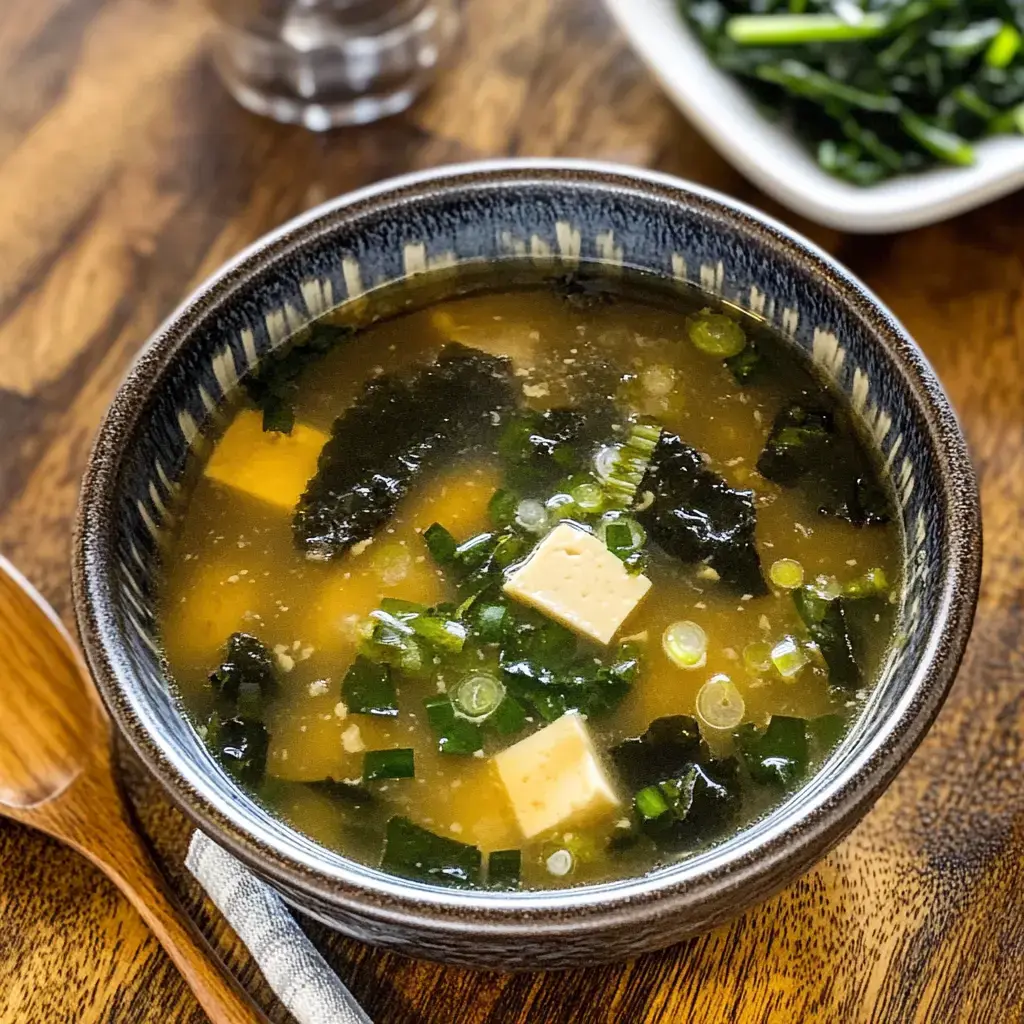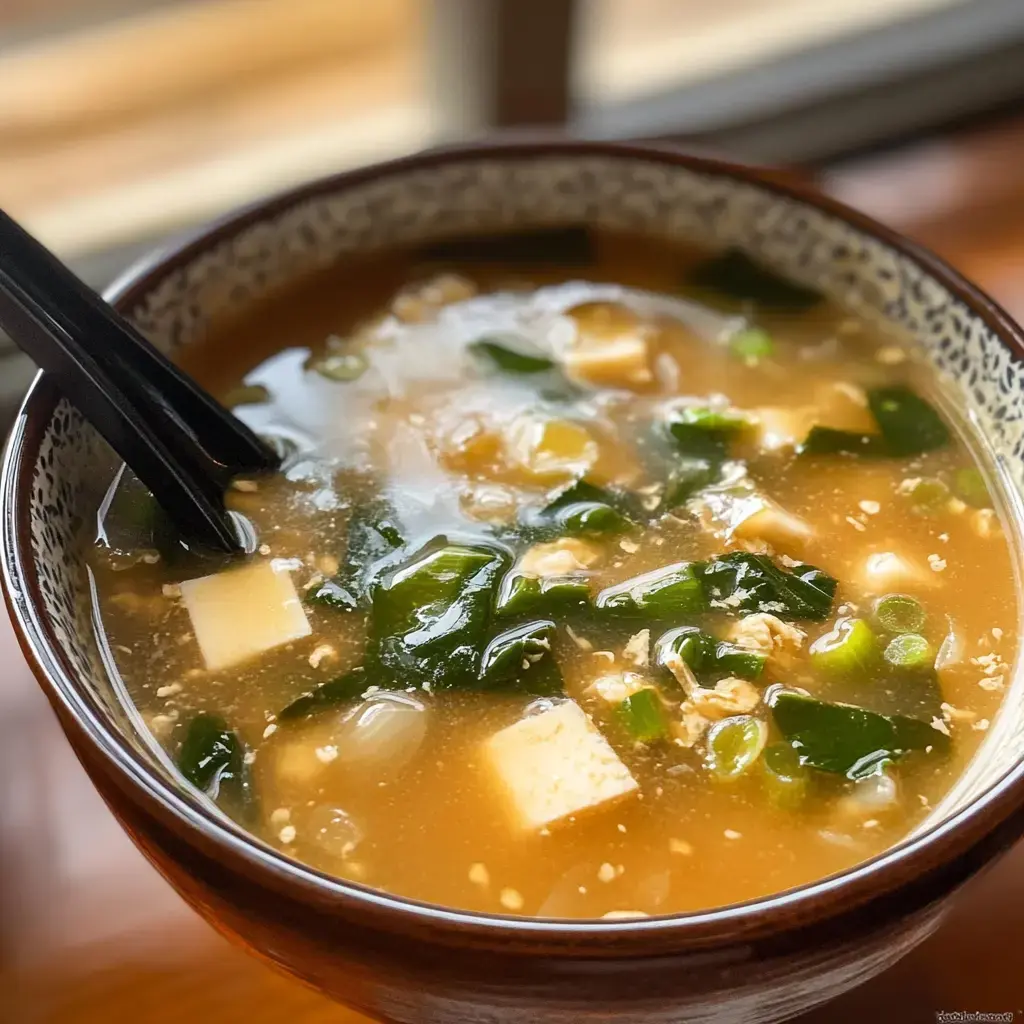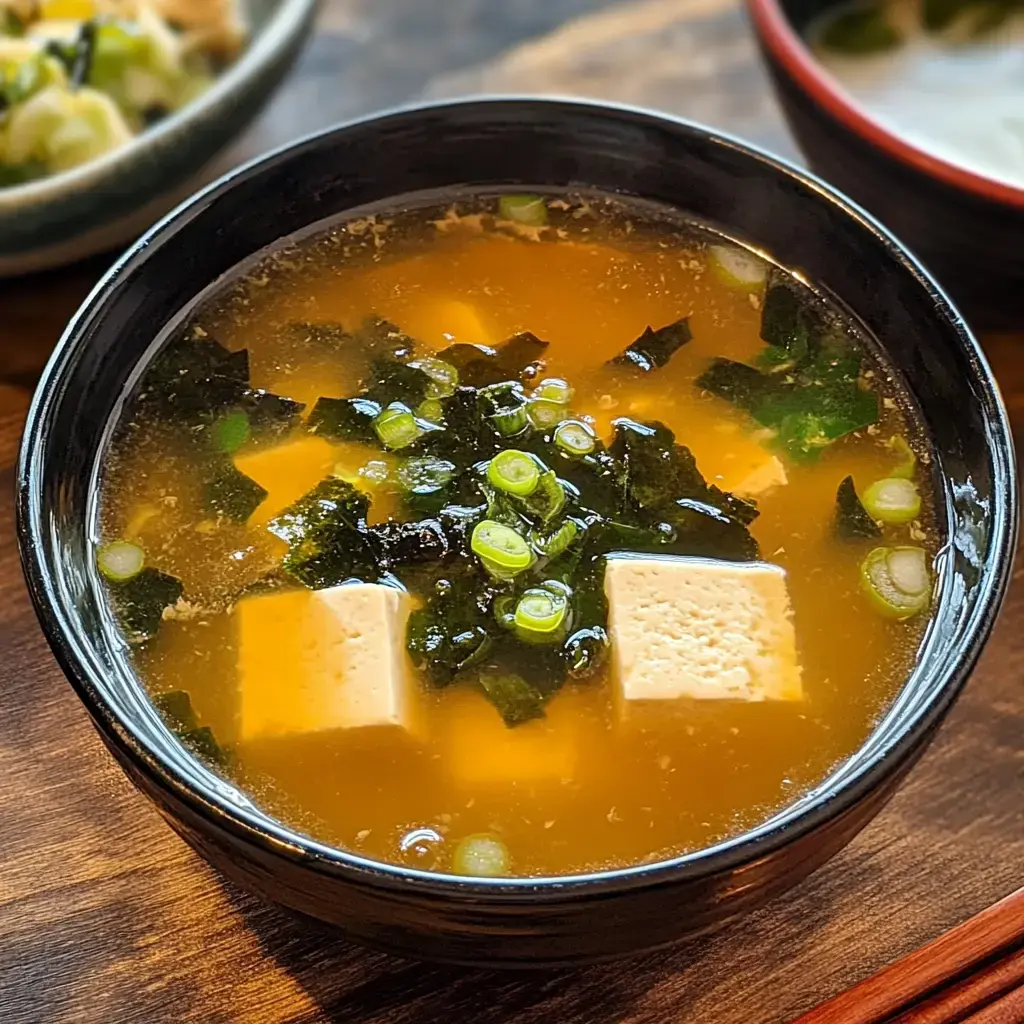 Pin it
Pin it
I've gotta tell you about my go-to way for whipping up real miso soup that brings all the warmth of a Japanese family meal straight to your table! Ever since my Japanese neighbor showed me this method, it's become my morning routine. When you first mix that miso paste in and your kitchen gets filled with that amazing savory smell, it takes me straight back to when I traveled around Japan. The first time my family tried it, they were shocked that something this simple could pack such incredible flavor!
What Makes This Approach Outstanding
This goes way beyond your average soup! Creating your own dashi base gives you this amazing flavor depth that store-bought versions just can't match. My friend was down with a cold last week, so I dropped off some of this soup and she told me it beat anything she'd had at restaurants. Even my picky eaters who normally only want chicken noodle have started asking for this instead!
Your Required Items
- For The Dashi:
- Clean water that's pure
- Kombu seaweed that's fresh
- Katsuobushi flakes made traditionally
- For The Soup:
- A strainer with fine mesh
- Miso paste of top quality
- Green onions freshly cut
- Tofu of the silken variety diced perfectly
- Seaweed wakame in dried form
Time To Begin Cooking
- Dashi Creation
- Put your kombu in cool water first and watch as it slowly gives off its goodness. You'll know it's done when tiny bubbles pop up around it. Throwing in the katsuobushi is like putting the finishing touch on a masterpiece!
- Soup Construction
- Heat your strained dashi slowly, drop in those tofu squares and watch how the wakame opens up like flowers underwater. Just remember one thing above all else. Don't ever let it boil or you'll lose all those subtle tastes.
- Working With Miso
- This is where old ways meet proper technique. Always mix your miso in a spoon first then stir it into the pot. Each serving needs to be absolutely perfect!
 Pin it
Pin it
Getting It Just Right
Want to know my tricks for amazing miso soup? Go with filtered water for a cleaner dashi taste. Don't cut corners on kombu soaking time. And here's a gem I've learned. Store your miso paste in a special fridge container to keep it fresh longer. I sometimes blend different misos together for an extra layered taste!
Ready For Eating
Nothing beats eating this from authentic Japanese bowls with those tiny spoons that make broth sipping so nice. For my morning meal, I'll throw in a runny egg on the side. When I have company over, I put out extra stuff like different mushrooms or seaweed types so everyone can build their own perfect bowl!
Staying Fresh
Got a handy tip for you. Make more dashi than you need and keep it in your fridge! Then you can quickly fix fresh miso soup whenever you want. Just don't forget to never boil when you warm it up and always put your miso paste in fresh. I prefer making just enough for now so each bowl turns out great.
Try New Things
Feel free to switch things up! I sometimes toss in sliced mushrooms or baby spinach leaves. My friends who don't eat meat love it with just veggies and kombu dashi. One time I threw in some corn and potatoes and it was total comfort food! That's what makes cooking so fun. Finding what works best for you.
 Pin it
Pin it
The Significance Behind This Approach
This soup has turned into our family morning custom! There's something really grounding about kicking off your day with such a nourishing bowl. My kids are learning about foods from different places and why it matters to take our time with meals.
The greatest joy isn't just how tasty it is but seeing everyone's amazement when they find out how basic yet fulfilling authentic miso soup can be! Whether you make it for breakfast warmth or just because you need something cozy this always delivers. And seeing people discover what makes traditional Japanese cooking so special? That's why sharing food ideas feels so good!
Frequently Asked Questions
- → What is dashi used for?
Dashi is a Japanese stock made with kombu (kelp) and shaved bonito flakes. It’s the backbone of many Japanese dishes, adding a bold savory taste.
- → Can vegetarian soup taste this good?
Absolutely! Replace bonito flakes with dried shiitake mushrooms or just use kombu. Your soup will still have that umami kick.
- → Why can’t I boil miso?
Boiling miso spoils both its flavor and live probiotics. Stir it in after turning off the heat and keep reheating gentle.
- → How long does it last in the fridge?
This soup’s best fresh, but if you need to, store the base (no miso added) in the fridge for 2 days. Add miso freshly when reheating to keep the flavors bright.
- → What tofu works best here?
Silken or soft tofu is ideal. It blends seamlessly with the broth and feels light but satisfying.
Conclusion
Traditional miso soup brings together flavorful dashi broth, soft tofu cubes, and wakame seaweed. It’s an easy-to-make soup that highlights the mild but balanced tastes of Japanese cuisine.
